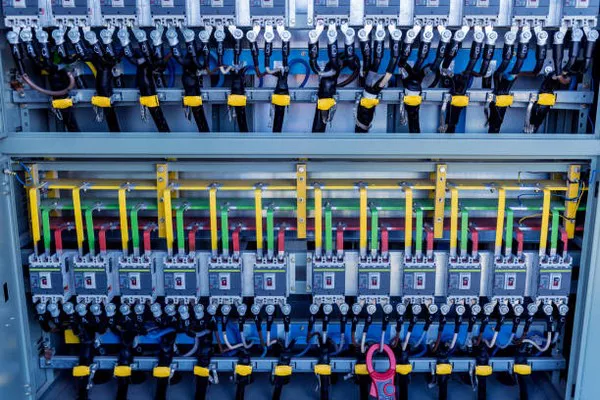In the ever-evolving landscape of machine learning, the introduction of Transformers has ushered in a transformative era, redefining the way we approach various natural language processing (NLP) and computer vision tasks. This article aims to provide a comprehensive overview of what a Transformer is, how it works, and why it has become a cornerstone in modern machine learning.
Understanding Transformers
In the realm of machine learning, a Transformer refers to a type of neural network architecture that has revolutionized the field, particularly in NLP. Originally introduced in the paper titled “Attention is All You Need” by Vaswani et al. in 2017, Transformers have since become the go-to choice for a wide range of applications due to their inherent capacity for parallelization and their effectiveness in modeling long-range dependencies.
Key Components of a Transformer
A Transformer consists of several fundamental components, each playing a crucial role in its operation:
Multi-Head Self-Attention Mechanism: This is the heart of a Transformer. Self-attention allows the model to weigh the importance of different words in a sequence when processing a given word. By considering all words simultaneously, Transformers can capture contextual information efficiently. This mechanism is performed multiple times in parallel with different weightings, enabling the model to attend to different parts of the input sequence.
Positional Encoding: Since Transformers do not have built-in positional information like recurrent neural networks (RNNs), positional encoding is added to the input embeddings to help the model distinguish between words based on their positions in the sequence.
Feedforward Neural Networks: After self-attention, the model uses feedforward neural networks to further process the information and produce more complex representations.
Layer Normalization: To stabilize training, layer normalization is applied after each sub-layer in the Transformer.
Encoder-Decoder Architecture: In many applications, such as machine translation, Transformers use an encoder-decoder architecture. The encoder processes the input sequence, while the decoder generates the output sequence.
Working Principles of Transformers
To understand how Transformers work, let’s break down the operation step by step:
Embedding: The input sequence is embedded into a vector space. These embeddings serve as the starting point for the Transformer’s computations.
Positional Encoding: Positional information is added to the embeddings, allowing the model to distinguish the position of each word in the sequence.
Multi-Head Self-Attention: The model computes self-attention scores for each word in the sequence, considering all words simultaneously. The scores are used to weight the importance of each word when producing the output.
Feedforward Networks: The attention outputs are processed through feedforward neural networks, further enhancing the representations.
Layer Normalization: Layer normalization is applied to stabilize training and improve the flow of information.
Encoder-Decoder (if applicable): In sequence-to-sequence tasks, an encoder processes the input, and the decoder generates the output based on the encoded information.
Why Transformers are Game-Changers
Transformers have gained immense popularity and are considered game-changers in the field of machine learning for several compelling reasons:
Parallelization: Unlike RNNs, where computations are sequential, Transformers can parallelize operations, making them significantly faster and more efficient. This attribute is vital in the age of big data.
Long-Range Dependencies: Transformers excel at capturing long-range dependencies in data. This ability is crucial for tasks like machine translation, where the relationship between the first and last words in a sentence might be essential.
Attention Mechanism: The self-attention mechanism allows Transformers to focus on relevant information, making them highly interpretable. This attention mechanism has found applications beyond NLP, including computer vision.
Pretrained Models: Pretrained models, like BERT, GPT-3, and their variants, have demonstrated remarkable results in various NLP tasks. These models can be fine-tuned for specific applications, reducing the need for extensive training data.
Applications of Transformers
Transformers have found their way into numerous applications, reshaping the landscape of machine learning:
Natural Language Processing: Transformers have revolutionized NLP tasks, including sentiment analysis, named entity recognition, text summarization, and language translation.
Computer Vision: Vision Transformers (ViTs) have extended the success of Transformers to image-related tasks, like image classification, object detection, and image generation.
Speech Recognition: Transformers have made significant strides in automatic speech recognition (ASR), enabling more accurate transcription of spoken language.
Recommendation Systems: Transformers are employed in recommendation systems to provide more personalized recommendations, as they can better capture user preferences.
Healthcare: In medical applications, Transformers are used for tasks such as diagnosing diseases from medical images and processing electronic health records.
Challenges and Ongoing Research
While Transformers have unlocked immense potential in machine learning, they are not without challenges:
Model Size: Many advanced Transformer models are extremely large, making them resource-intensive and challenging to deploy on resource-constrained devices.
Data Efficiency: Pretrained models often require substantial data for fine-tuning, which can be a limitation for tasks with limited training data.
Explainability: Although Transformers are highly interpretable due to their attention mechanism, understanding the decisions made by these models in practice remains a challenge.
Researchers are actively working on addressing these issues through techniques like model distillation, knowledge distillation, and developing smaller, more efficient architectures.
Conclusion
In the realm of machine learning, Transformers have ushered in a new era of possibilities. Their ability to efficiently model long-range dependencies, parallelize operations, and capture contextual information has made them indispensable for a wide range of applications, from natural language processing to computer vision and beyond. As ongoing research continues to tackle their limitations, we can expect Transformers to remain at the forefront of machine learning innovation, driving advancements in technology and reshaping the way we interact with data.

